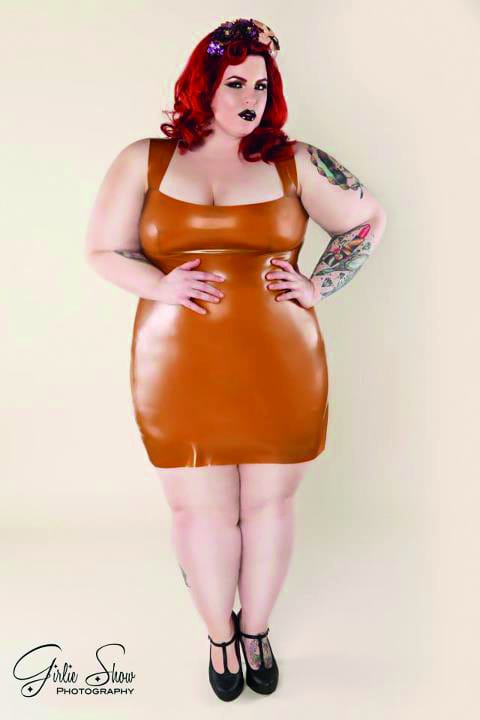‘Life on Foot’: Discovering Spanish shoe brand Camper
Cécile Borkhataria visits the exhibition at London’s Design Museum, discovering a unique shoe brand which prioritizes comfort first

After arriving at the Design Museum soaking wet from London’s pelting rain, I joined a group of journalists ready to be guided through the Museum’s latest exhibition entitled Life on Foot: Camper at the Design Museum. The exhibition marks the 40th anniversary of the Spanish footwear Brand Camper, which is well known for its casual styles, many of which are unisex. The exhibition guides visitors through the process of how a shoe collection is researched, created, manufactured and presented – from initial sketches to the detailed graphics on the shoebox.
I was amongst a group of journalists greeted by the director of the design museum, Deyan Sudjic. He explained that the museum, along with an exhibition design company, had worked closely with Camper brand representatives to develop the exhibition. The introduction was followed by some words from the brands CEO, Miguel Fluxá. Miguel’s great grandfather, Antonio Fluxá, founded the first shoe factory in Spain in 1877. He was a farmer who went to France and England to learn the craft of shoe making, after which he came back to Spain with the equipment he needed to set up a shoe-making factory. In 1975, Miguel’s father Lorenzo joined the family business and so the brand ‘Camper’ was born. The brands name pays homage to Miguel’s great grandfather, as the word means ‘farmer’ in the language of Mallorca (Mallorquí) where the company was founded.
Camper places a strong emphasis on individuality to create a brand that is different and has its own identity. This sense of individuality is reflected in Camper stores across the world, where no one store design is the same. Miguel Fluxá thinks that the world today is becoming a little boring and uniform, so he thought it would be interesting for the stores to be different. For instance, Camper’s Milan store is famed for having dedicated a single blank wall solely for its stores visitors to decorate with graffiti. Recognizing this fun gimmick, the design museum has replicated this idea for the exhibition, and visitors are welcome to graffiti the blank wall space next to an impressive wall display of white camper trainers.
The exhibition guides the viewer through six of the brand’s key styles, for example Pelotas – the brands bestseller for the past 20 years, Himalayan, Twins and Wabi, whilst exploring the design, manufacturing and history of the family-run business whose designs are iconic and purchased in their millions worldwide.
The process of designing and creating a Camper shoe begins at the company’s design studios in Mallorca, Spain. Manufacturing then takes place in one of its factories in China, Indonesia or Vietnam. Although the brand used to manufacture its shoes on site in Mallorca, like many product-based businesses, it seized the opportunity of manufacturing its shoes at a much lower cost in East Asia.
The opening of the exhibition features a video illustrating the painstakingly detailed precision required to make a Camper shoe. Whilst some aspects of manufacturing are mechanized, such as sewing the sole of the shoe onto its base, many others, such as cutting out individual pieces of leather for constructing the shoe, are done by hand. Contrary to what I expected from a mass production factory in Asia, this video made the process look like it was taking place in an artisanal shoe shop in Spain. Interestingly, whilst making a pair of Camper shoes usually only takes a few hours in the factory, up to 300 people may be involved in the making of one single shoe.
Two seasonal collections of Camper shoes are designed every year, with each collection containing around 500 shoes which are produced by many of the companies designers, as well as external collaborators, in response to a design brief set by the company’s creative director, now French designer Romain Kremer. These briefs usually specify the style, mood and colour palette for that season, whilst also predicting trends for the coming year. What makes Camper unique is that at the design stage, and all the way through manufacturing, the design of a shoe is based on ‘the last’, a model of the human foot. The lasts are made by a team of technicians at Camper, advising the design team on comfort for the wearer. The same last used during design is also used during manufacturing, to ensure that the actual shoe fits the foot in the intended way.
The flagship product of the brand remains the Pelotas, the company’s most distinctive shoe design. Over ten million pairs of Pelotas have been sold since they were first launched by Camper in 1995. The design was inspired by vintage American sports trainers, and its name means ‘balls’ in Spanish, referencing the 87 indented balls on the sole of a Pelota shoe
Another of Camper’s most famous designs is arguably the ‘Wabi’, meaning ‘peasant’ or ‘rustic’ in Japanese. It is meant in a sense of simplicity, a modesty with no pretension. Wabi shoes are made for indoor use, placing an emphasis on sustainability in the materials they’re made of. They are directed to all ages, for use throughout all seasons of the year. The first prototypes of the Wabi were made using hemp and coconut, but now, a standard Wabi’s sole is composed of recycled rubber and its upper is usually made of wool. Following the Wabi’s, the next iconic design showcased are the ‘Twins’. These shoes, first introduced in the early 90’s, were unique in that they were non-identical pairs of shoes, which were revolutionary at the time. Across its product range, Camper has collaborated with many different designers, including celebrated Spanish artist Joan Miró on a pair of graphic ‘twins’.
The exhibition forays into Camper’s various advertising campaigns, past and present. The company uses adverts in a humorous way, whilst also questioning mass consumerism. Many of its adverts avoid using direct images of shoes, and most use English instead of Spanish, appealing to a global audience. One famous advertising poster, created by Guixé in 2002, bore the slogan “No los compres si no los necesitas”, meaning “Don’t buy it if you don’t need it”. This paradoxical take on advertising emphasizes that Camper is different, and is as much a maverick lifestyle brand as it is a global shoe retailer.
In line with Campers position as a lifestyle brand, the company launched their ‘walking society’ advertising campaign in 2001. The campaign’s slogan “Walk, Don’t Run”, emphasizing the conflict between the slow pace of the rural world and the fast pace of urban reality, bringing them together.
Finally, the exhibition explores the potential future of walking, looking at the ways in which technological and sociological developments might change the landscape for everyday pedestrians. An array of speculative design ideas look at new directions and possibilities for pedestrians. For example, researcher Shamees Aden studies protocells, an area of synthetic biology that may offer new approaches to footwear design in the future. Protocells become semi-living substances through the manipulation of their chemical structures, and an ‘amoeba trainer’ designed by Aden suggests that these cells could mould around the foot, creating a type of second skin shoe. As this part of the exhibition focuses on ‘life on foot’ as a whole, it looks at innovation in space suit design. It showcases images of newly developed space suits that look like a wetsuit rather than a traditional bulky space suit, allowing a more seamless walking experience in Space. The final parts of the exhibitions take a look at changing city landscapes as a result of technological innovation and changing walking habits. The exhibit displays an interactive screen showing the number of average daily steps taken in cities around the world. It shows that Tokyo is one of the world’s most active cities in terms of average steps per day, due in part, no doubt, to the lack of efficient public transportation and the reliance on cars for displacement. By contrast, Los Angeles has some of the lowest levels of steps taken. Such insights have led city planners to investigate the possibility of widespread ‘express walkways’ becoming mainstream in cities, similar to flat moving walkways in airports. These could resemble motorways for pedestrians, with shoe repair stations, food shops and other amenities along the way. These ideas may change the landscape of cities as we know them in the near future, whilst redefining the footwear fashion sphere.
The exhibition is open to the public at London’s Design Museum from the 13th of May till the 1st of November, located at123 Shad Thames. Student tickets cost £9.75 and adult tickets are £13. Tickets give access to three exhibitions in the museum, which is located just south of the river. The closest tube stations are Tower Hill and London Bridge.








